Parts of a Toilet: With Parts of Toilet Seat and Tank
Important Point
The modern toilet is an essential fixture in every household, providing comfort and convenience that we often take for granted.
While most of us are familiar with its basic structure, the intricate components that make up a toilet’s functionality might remain a mystery.
In this comprehensive guide, we’ll delve into the various parts of a toilet, with a specific focus on the parts of the toilet seat and tank.
Whether you’re a curious homeowner or just interested in plumbing mechanisms, this article will provide you with a deeper understanding of this often-overlooked invention.
Understanding the Different Parts of a Toilet
To truly appreciate the marvel of engineering that is the modern toilet, it’s essential to be acquainted with its various components.
Here, we’ll break down the different parts of a toilet:
- Toilet Bowl: The toilet bowl is the visible, bowl-shaped fixture where waste and water are contained before flushing. It’s typically made from porcelain and is designed to facilitate easy cleaning and waste removal.
- Toilet Seat: The toilet seat is the part of the toilet that provides a comfortable seating surface for users. It’s typically made from materials like plastic or wood and comes in various shapes and sizes to accommodate different preferences.
- Toilet Lid: The lid is the cover for the toilet bowl. It serves both aesthetic and functional purposes, preventing odors from escaping and providing a flat surface when the toilet is not in use.
- Flush Mechanism: The flush mechanism is responsible for initiating the flushing process. It includes a lever or button that, when pressed, triggers the release of water from the tank into the bowl.
- Flushing System: The flushing system comprises the parts that control the water flow during flushing. It includes components like the flush valve, which releases water from the tank into the bowl, and the fill valve, which refills the tank after flushing.
- Trapway: The trapway is the curved channel inside the toilet that carries waste from the bowl to the sewer system. It’s designed to prevent foul odors from escaping while maintaining a smooth flow of water and waste.
Also, Read: Physical Properties of Sand
Exploring the Parts of a Toilet Seat
The toilet seat might seem like a simple component, but it consists of several parts that contribute to its functionality and comfort.
Let’s examine the different parts of a toilet seat:
- Seat Ring: The seat ring is the main surface of the toilet seat where users sit. It’s typically contoured for comfort and comes in different shapes, such as round or elongated.
- Hinges: Hinges are the mechanisms that attach the toilet seat to the toilet bowl. They allow the seat to be lifted and lowered and come in various designs, including standard and slow-closing hinges.
- Lid: In some toilets, the seat comes with an attached lid. The lid serves as a cover for the toilet bowl and can prevent objects from falling into the bowl when the toilet is not in use.
- Bumpers: Bumpers are small rubber or plastic components attached to the underside of the toilet seat. They provide cushioning and prevent the seat from making direct contact with the bowl, reducing noise and potential damage.
- Mounting Bolts: Mounting bolts are used to secure the hinges of the toilet seat to the toilet bowl. They ensure that the seat remains stable during use.
Useful Article For You
- Parts of a Bridge
- Parts of a Gable Roof
- Parts of a Porch
- Parts of a Step
- Parts of a Roof Overhang
- Parts of a Building
- Parts of a Wall Interior
- Parts of Arches
- Parts of Theodolite
- Parts of a Door Frame
- Parts of a House Foundation
- Parts of a Total Station
- Parts of a Brick
- Parts of a Trap
- Parts of a Tape Measure
- Parts of a Retaining Wall
- Parts of a Bulldozer
- Parts of a Manhole
- Parts of a Beam Bridge
- What Are the Parts of a Curtain Called
The Intricacies of the Toilet Tank
While the toilet seat is the part we interact with the most, the toilet tank houses the inner workings of the flushing mechanism.
Here’s a closer look at the components within the toilet tank:
- Fill Valve: The fill valve, also known as the ballcock, is responsible for refilling the toilet tank with water after each flush. It detects the water level in the tank and stops the flow of water once the tank is filled to the appropriate level.
- Flush Valve: The flush valve, also called the flapper, is a rubber component that covers the opening between the tank and the bowl. When the flush lever is activated, the flush valve lifts, allowing water to rush from the tank into the bowl for flushing.
- Overflow Tube: The overflow tube prevents the toilet tank from overfilling. It directs excess water into the bowl if the water level in the tank becomes too high.
- Flush Handle or Button: The flush handle or button is the external component that users interact with to initiate the flushing process. When pressed or lifted, it activates the flush mechanism inside the tank.
- Chain or Lift Wire: The chain or lift wire is connected to the flush valve and the flush handle. It lifts the flush valve when the handle is pressed, allowing water to flow into the bowl.
- Flapper Seat: The flapper seat is the area where the flush valve rests when the toilet is not in use. It ensures a watertight seal, preventing water from flowing into the bowl when the tank is full.
- Float: The float is a buoyant component that’s connected to the fill valve. It rises with the water level in the tank and signals the fill valve to shut off when the tank is full.
The toilet is undoubtedly one of the most ingenious inventions of modern plumbing.
Its seemingly simple design belies the intricate network of components that work together seamlessly to provide us with comfort and sanitation.
From the various parts of the toilet seat to the inner workings of the toilet tank, each element plays a crucial role in the toilet’s overall functionality.
So, the next time you use a toilet, take a moment to appreciate the engineering marvel that it is.
Knowing about the parts that make up this everyday fixture adds a new layer of understanding to the convenience it brings to our lives.
Whether it’s the flushing system, the tramway, the seat hinges, or the flush valve, every part of the toilet contributes to the efficient and hygienic disposal of waste.
Also, Read: Grade Beam Foundation
Parts of a Water Closet Toilet
A water closet toilet, commonly referred to as a “WC,” is a term often used to describe a modern flush toilet enclosed in a small, private compartment within a bathroom.
This type of toilet is widely used in residential and commercial settings for its convenience and hygienic benefits.
Let’s delve into the specific components that make up a water closet toilet:
1. Toilet Bowl and Seat:
The toilet bowl is a key component of the water closet. It is designed to collect and contain waste before flushing.
The shape and design of the bowl contribute to effective waste removal and water distribution.
The toilet seat, typically made from plastic or wood, provides a comfortable and hygienic surface for users to sit on.
2. Flush Mechanism:
The flush mechanism is responsible for initiating the flushing process. In a water closet toilet, this mechanism is often activated by a lever or button located on the toilet tank or wall.
When activated, it triggers the release of water from the tank into the bowl, facilitating waste removal.
3. Toilet Tank:
The toilet tank holds the water that is used for flushing. It is usually located at the back of the toilet bowl.
Inside the tank, various components work together to control the flushing process. These components include the flush valve, fill valve, overflow tube, float, and flapper.
4. Flush Valve and Flapper:
The flush valve is a mechanism that opens to allow water to flow from the tank into the bowl when flushing.
The flapper, a rubber component, covers the flush valve opening when the toilet is not in use, preventing water from continuously flowing into the bowl.
5. Fill Valve:
The fill valve, also known as the ballcock, is responsible for refilling the toilet tank with water after each flush.
It senses the water level in the tank and shuts off the water supply when the tank is filled to the desired level.
6. Overflow Tube:
The overflow tube prevents the toilet tank from overfilling. If the water level in the tank becomes too high, excess water is directed into the toilet bowl through the overflow tube.
7. Float:
The float is a buoyant device connected to the fill valve. As water fills the tank, the float rises.
Once it reaches a certain height, it signals the fill valve to shut off, stopping the flow of water.
8. Trapway:
The trapway is the curved channel within the toilet bowl that leads to the drainpipe.
It ensures that water and waste are directed away from the bowl and into the sewage system while preventing foul odors from escaping.
9. Bowl Rim:
The bowl rim is the upper edge of the toilet bowl. Water is directed from the tank through small openings along the rim during flushing, facilitating efficient cleaning and waste removal.
10. Wax Ring and Closet Bolts:
The wax ring is a sealing material placed between the base of the toilet bowl and the floor.
It creates a watertight seal to prevent leaks. Closet bolts are used to secure the toilet bowl to the floor and hold it in place.
11. Vent Pipe (Optional):
In some plumbing setups, a vent pipe is connected to the toilet to provide ventilation and ensure proper drainage.
The vent pipe helps maintain air pressure balance in the plumbing system, preventing siphoning and promoting efficient drainage.
In conclusion, a water closet toilet is a well-engineered fixture that comprises various components working harmoniously to provide efficient waste removal and sanitation.
From the flush mechanism to the tramway, each part plays a crucial role in maintaining the hygiene and comfort of users.
Whether in homes, public spaces, or commercial establishments, the water closet toilet continues to be an essential element of modern plumbing systems.
Also, Read: Luminous Flux Vs Lumens
Parts of a Restroom
A restroom is a vital and frequently used facility in various settings, serving as a space for personal hygiene and relief.
To gain a comprehensive understanding of this essential space, let’s dissect the components that constitute a typical restroom:
1. Toilet Stalls:
Toilet stalls provide privacy for users during their time in the restroom.
Each stall usually contains a toilet bowl, a toilet seat, and a locking door. The stalls are designed to ensure personal space and comfort for users.
2. Sinks and Countertops:
Sinks and countertops are crucial for handwashing and personal grooming.
They provide access to water for users to wash their hands, brush their teeth, or perform other hygiene-related tasks.
Soap dispensers and paper towel holders are often installed near sinks for convenience.
3. Mirrors:
Mirrors are essential in restrooms for personal grooming and checking one’s appearance.
They help users adjust clothing, style their hair, and ensure that they are presentable before leaving the restroom.
4. Hand Dryers:
Hand dryers provide an eco-friendly and convenient method for drying hands after washing.
They eliminate the need for paper towels and contribute to reducing waste.
5. Trash Receptacles:
Trash receptacles are strategically placed in restrooms to allow users to dispose of used paper towels, sanitary products, and other waste items properly.
Regularly emptied receptacles help maintain cleanliness and hygiene in the space.
6. Toilet Paper Dispensers:
Toilet paper dispensers are positioned within toilet stalls, providing users with the necessary material for personal hygiene.
These dispensers ensure that toilet paper is easily accessible and hygienically stored.
7. Baby Changing Stations (Where Applicable):
In family-friendly and public restrooms, baby changing stations are installed to provide a clean and safe area for caregivers to change diapers and attend to infants.
8. Faucets and Controls:
Faucets allow users to control the flow of water for handwashing and other tasks.
In modern restrooms, touchless or sensor-activated faucets are increasingly common to minimize the spread of germs.
9. Partition Walls:
Partition walls separate individual toilet stalls, providing privacy for users.
These walls are typically made from sturdy materials and are designed to ensure personal space and comfort.
10. Flooring and Wall Coverings:
Restroom floors and walls are often covered with materials that are easy to clean and maintain.
Tile, vinyl, or other water-resistant surfaces are commonly used to withstand the moisture and cleaning agents present in restrooms.
11. Ceiling and Lighting:
Adequate lighting is essential in restrooms to ensure visibility and safety.
Properly designed lighting fixtures are positioned on the ceiling to illuminate the space effectively.
12. Exhaust Fans:
Exhaust fans help maintain good air quality by removing odors, moisture, and humidity from the restroom.
They contribute to a comfortable and pleasant environment for users.
13. Emergency Equipment (Where Required):
In larger establishments, such as shopping malls or public buildings, emergency equipment such as fire alarms, emergency call buttons, and first aid supplies may be strategically placed within restrooms for safety.
14. **Accessibility Features (Where Required):
Restrooms designed for accessibility may include features such as grab bars, wider entryways, and lower sinks to accommodate individuals with mobility challenges.
15. Decorative Elements:
Decorative elements, such as artwork, signage, and color schemes, are often incorporated into restrooms to create a pleasant ambiance and enhance the overall experience for users.
In conclusion, a restroom is a multifaceted space that encompasses a range of components to meet users’ hygiene and comfort needs.
From functional elements like sinks and toilets to safety features and aesthetic considerations, each part plays a vital role in ensuring a clean, convenient, and user-friendly environment for individuals in various settings, including public spaces, workplaces, restaurants, and more.
Also, Read: Roof Tiles Types and Prices
Parts of the Toilet Flush
The seamless flush of a toilet is a marvel of engineering, driven by an intricate interplay of internal components.
Understanding these parts can shed light on the remarkable process that takes place every time you activate the flush lever.
Let’s delve into the internal parts of a toilet responsible for its efficient operation:
1. Flush Handle or Button:
The flush handle or button is the external component that users interact with to initiate the flushing process. When pressed or lifted, it sets the entire mechanism into motion.
2. Trip Lever or Flush Button Mechanism:
The trip lever or flush button mechanism is connected to the flush handle or button.
It’s responsible for translating the user’s input into action, releasing water from the toilet tank into the bowl.
3. Flush Valve:
The flush valve is a key component of the flush mechanism. It’s a rubber or plastic flapper that covers the opening between the toilet tank and the bowl.
When the flush lever is activated, the flush valve lifts, allowing water to rush from the tank into the bowl for flushing.
4. Flapper Chain or Lift Wire:
The flapper chain or lift wire connects the flush valve to the trip lever mechanism.
It lifts the flush valve when the lever is pressed, enabling water to flow from the tank into the bowl.
5. Fill Valve or Ballcock:
The fill valve, also known as the ballcock, controls the refilling of the toilet tank after flushing.
It detects the water level in the tank and shuts off the water supply once the tank is filled to the desired level.
6. Float:
Connected to the fill valve, the float is a buoyant component that rises with the water level in the tank.
Once the float reaches a certain height, it signals the fill valve to stop the flow of water, preventing overfilling.
7. Overflow Tube:
The overflow tube is designed to prevent the toilet tank from overflowing. If the water level in the tank rises too high, excess water is directed into the overflow tube and into the toilet bowl.
8. Toilet Tank Lid:
The toilet tank lid serves as both an aesthetic covering and a barrier against debris falling into the tank.
It also contributes to maintaining a tidy appearance in the restroom.
9. Flush Valve Seat:
The flush valve seat is the area where the flush valve rests when the toilet is not in use.
It ensures a watertight seal, preventing water from leaking into the bowl when the tank is full.
10. Gaskets and Seals:
Various gaskets and seals are used throughout the toilet’s internal components to create watertight connections and prevent leaks.
They contribute to the toilet’s overall efficiency and proper functioning.
11. Trapway:
While technically part of the toilet bowl, the tramway is a crucial component of the flushing system.
It’s the curved passage within the toilet that carries waste from the bowl to the drainpipe. The design of the tramway prevents clogs and facilitates efficient waste removal.
12. Rim Jets:
Rim jets are small openings located along the inner rim of the toilet bowl.
During flushing, water is released from these jets, creating a swirling motion that enhances the cleaning action within the bowl.
13. Siphon Jet (Optional):
Some toilets are equipped with a siphon jet, which is an additional jet located near the bottom of the toilet bowl.
This jet helps enhance the flushing power by creating a strong siphoning action that efficiently removes waste.
In conclusion, the internal components of a toilet work harmoniously to achieve a seamless and efficient flushing process.
From the flush valve and fill valve to the float and overflow tube, each part contributes to water conservation, waste removal, and the overall functionality of this essential fixture.
Whether you’re dealing with a traditional flush mechanism or a more modern design, understanding these internal components offers a glimpse into the inner workings of a technology we often take for granted.
Useful Article For You
- Types of Cranes
- Types of Doors
- What Is a Contour Interval
- Parapet Wall
- How Much Does 1 Gallon of Water Weigh
- Flight of Stairs
- Pitched Roof
- Sheeps Foot Roller
- Queen Size Bed Dimensions in Feet
- Moment Frame
- Edm Instrument
- Different Types of Arches
- Monolithic Slab
- Zero Force Members
- How Much Does a Yard of Concrete Weigh
- Live Load Vs Dead Load
- Cmu Wall Meaning
- Gradient Road
- Pile-Cap
- Bond Breaker
- Budget Sunroom Ideas
- What Is Gypsum Board
- Types of Vaulted Ceilings
- Concrete Cold Joint
- Well Points
- Abutment Bridge
- Finishing Plaster
- Spandrel Beam
What Is the Thing That Flushes the Toilet Called?
The mechanism responsible for initiating the flushing process in a toilet is commonly known as the “flush handle” or “flush lever.”
This crucial component, often located on the front or side of the toilet tank, is what users interact with to activate the flushing action.
When the flush handle is pressed or lifted, it sets in motion a sequence of internal events that result in the release of water from the tank into the toilet bowl.
The flush handle is connected to a mechanism called the “trip lever” or “flush button mechanism.” This connection enables the user’s input to be translated into action within the toilet tank.
As the flush handle is engaged, the trip lever moves, prompting the movement of other components within the tank.
One of the pivotal parts that responds to the movement of the trip lever is the “flush valve.” The flush valve, typically a rubber or plastic flapper, covers the opening between the toilet tank and the bowl.
When the trip lever is activated, it lifts the flush valve, allowing water to rush from the tank into the bowl. This sudden surge of water creates a forceful flow that effectively clears away waste and cleans the bowl.
The flush handle, trip lever, and flush valve work in tandem to achieve a swift and efficient flushing action.
This simple yet ingenious mechanism underscores the convenience and sanitation that toilets provide in our daily lives.
As we press that flush handle, we trigger a process that reflects the culmination of engineering and design, making the flush handle a small yet vital part of a technology that has revolutionized modern hygiene and sanitation practices.
What Are the 5 Parts of a Toilet?
- Rubber Flapper. The round, flat rubber flapper covers the hole at the bottom of the tank where water runs out to the toilet bowl when you flush.
- Fill Valve.
- Fill Float.
- Flush Lever and Chain.
- Overflow Tube.
What Are the Parts Inside the Toilet Tank Called?
On a gravity-fed toilet the tank houses the fill valve (frequently called a “ballcock”), the flush valve (usually including an overflow tube with a flapper and flapper seat) and the flush or trip lever. These parts are called “trim.”
How Many Different Types of Toilet Seats Are There?
There are 2 main types of toilet seats: soft close and standard close. A standard close toilet seat can be modern or traditional in style and is available in a variety of materials and finishes. They are easy to fit and can suit a wide variety of washrooms.
Do Toilets Come with All Parts?
When you purchase a new toilet, it should come with most of the parts that you’ll need. Check the box and make sure it includes brass closet bolts (to connect the toilet to the flange), and a gasket for connecting the tank to the base, a wax ring, a fill valve, flush valve and flapper.
Types of Toilet Flush Systems
- Gravity Flush Systems.
- Pressure-Assisted Flushing System.
- Dual Flush System.
- Single Flush System.
- Siphon Flush System.
- Double Cyclone Flush System.
- Tornado Flush System.
- Ballcock Flush System.
Toilet Flush Problems
Toilets usually lack flushing power because the waste pipe, siphon jet, or rim jets are partially clogged, or the water level in the tank or bowl is too low. In those cases, clear the blockage and adjust the system to correct the water levels.
What Is the Thing That Flushes the Toilet Called?
Toilet flapper: Situated at the base of the tank, this lifts and triggers a flush of water to the toilet bowl. It is also called a flapper valve. Toilet lever: Connected to the handle, this lever lifts the rubber flapper, which triggers the flush.
Like this post? Share it with your friends!
Suggested Read –

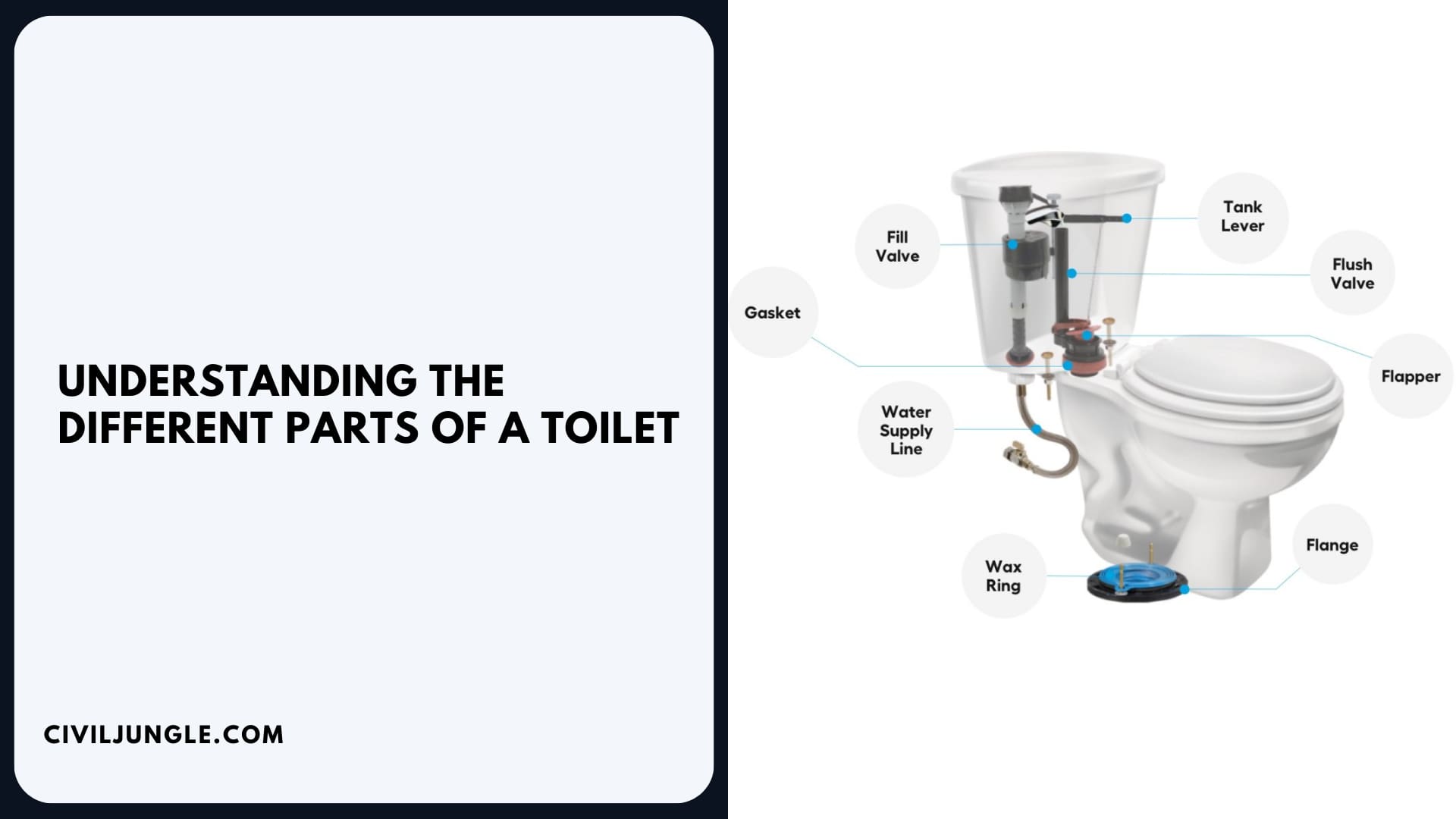
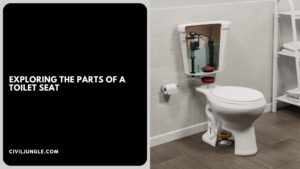
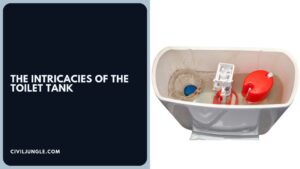
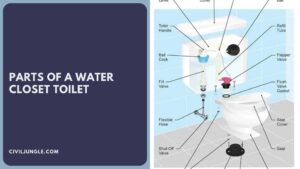


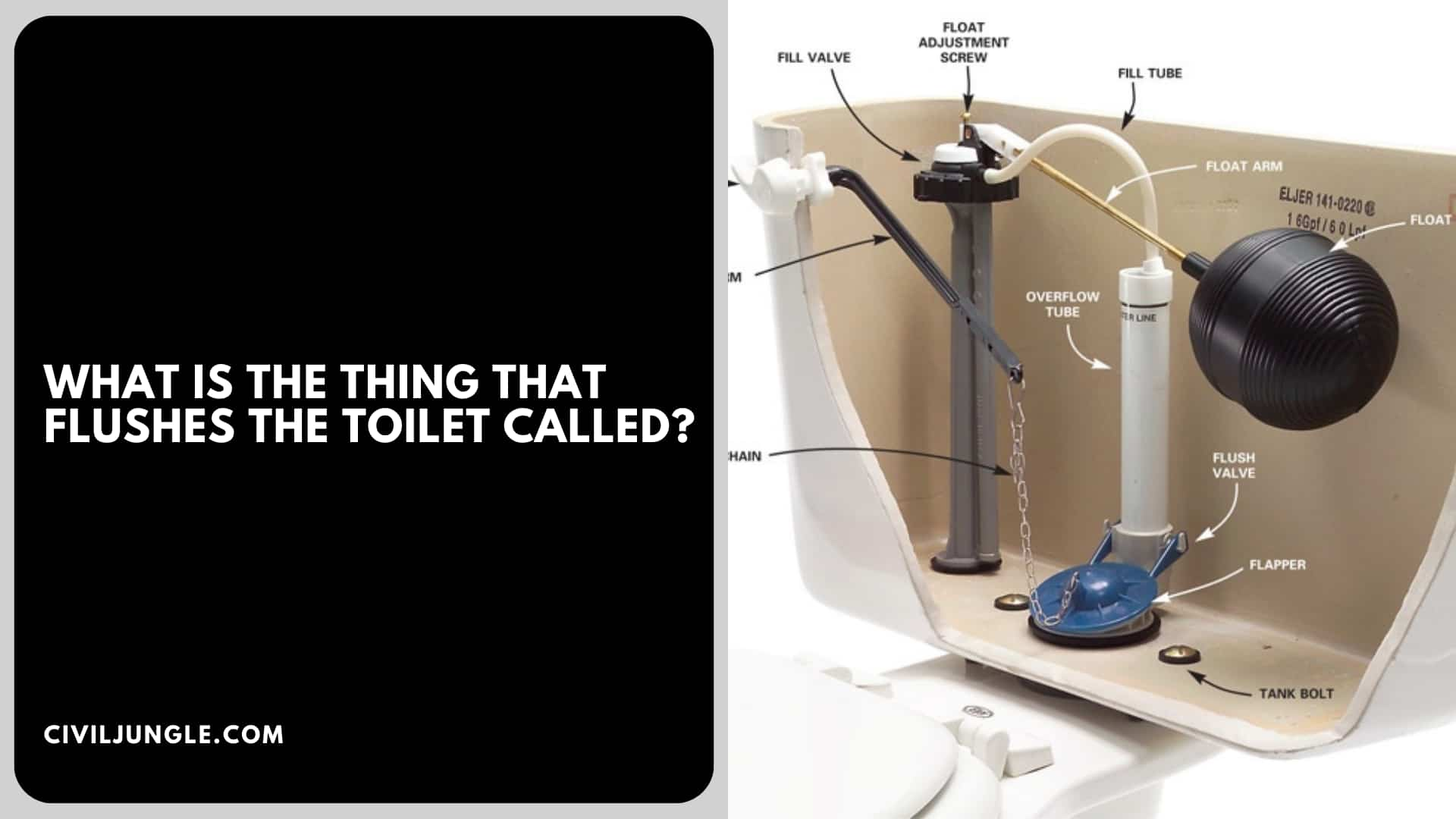

Leave a Reply